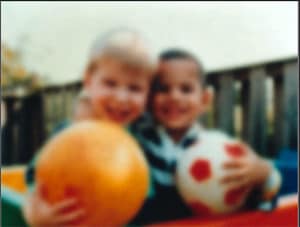Prevention is better than cure! This is especially the case when it comes to common eye diseases. Progress can be slowed if these problems are detected early.
Common Eye Diseases
One of the greatest challenges we face as we age is our continual loss of conditioning and function. Simply put, the older we get, the more our functionality is affected. This applies to mobility, dexterity, digestion and hearing.
Unfortunately, the eyes are no different when it comes to decreased functionality. This is the case, even if we spent our lives being careful not to strain our eyes, to live in a healthy manner and to always wear protective glasses when outdoors in the sun.
At Healthcare 2 You, eye care is a large part of our service to the older members of our community. Amongst the most common eye diseases we encounter are cataracts, glaucoma, age-related macular degeneration and diabetes-related changes in the back of the eye.
If your elderly parent or relative points out that they feel they are looking through a fog, or they happen to remark that the newspaper ink isn’t good quality like it used to be, this can be cause for concern. The newspaper ink hasn’t changed but your Loved One may be experiencing the early warning signs of eye disease. Often, these signs are glossed over until quality of life is severely decreased or something catastrophic like a fall occurs.
Here are some brief explanations of the common eye diseases and how they present in the elderly:
Cataracts
A cataract is a clouding of the eye’s natural lens, which lies behind the iris and the pupil. Cataracts are the most common cause of vision loss in people over age 40 and are one of the leading causes of blindness.
One of the dangers of cataracts is they come on slowly, usually starting with vision becoming a little blurry. This condition can also make light from the sun seem brighter than before. It can also cause colours to look dull.
When symptoms of cataracts begin to appear, your Loved One may be able to improve their vision for a while using new glasses, strong bifocals, magnification, appropriate lighting or other visual aids.
Many people do not realise that cataract surgery is an option. This simple, relatively painless procedure has the potential to restore vision so it is worth having a discussion with your eye specialist.

“This is how a person with cataracts would view the world”
Glaucoma
Glaucoma affects the optic nerve and usually starts with a loss of peripheral vision. At first, the other eye will compensate for the loss, which means glaucoma often goes undetected in its early stages.
As explained on website glaucoma.org.au, “Damage caused is irreversible and will progress unless treated. Treatment cannot restore lost vision but may halt or slow down the damage process. Early detection of glaucoma means that treatment can commence before a significant loss of vision occurs.”

“This is how a person with glaucoma would view the world”
Age-related Macular Degeneration
AMD, as it is known, affects the part of the retina which is used for straight-ahead sight. This common eye disease mostly affects smokers and those who are over the age of 75. The symptoms can include:
- A gradual decline in the ability to see objects clearly
- Distorted vision
- Dark or empty spaces blocking the central field of vision
- Dimming of colour vision
- Visual hallucinations
There are many tests available to monitor and diagnose macular degeneration. Treatment may depend on the type of AMD your Loved One has, but there are options which may be able to help elderly people to maintain their vision for longer.

“This is how a person with age-related macular degeneration would view the world”
Diabetes-related Eye Disease
Diabetes-related eye diseases include diabetic retinopathy and diabetic macular edema.
Diabetic retinopathy is caused by chronically high blood sugar from diabetes, which can damage the tiny blood vessels in the retina.
According to the National Eye Institute, “DME is the build-up of fluid (edema) in a region of the retina called the macula. The macula is important for the sharp, straight-ahead vision that is used for reading, recognizing faces, and driving. DME is the most common cause of vision loss among people with diabetic retinopathy. About half of all people with diabetic retinopathy will develop DME. Although it is more likely to occur as diabetic retinopathy worsens, DME can happen at any stage of the disease.”
Early symptoms of diabetes-related eye disease can be difficult to detect so the Eye Institute recommends people with diabetes have eye checks once per year. As with many other common eye diseases, early detection and treatment are essential to prevent or slow symptoms which lead to blindness.

“This is how a person with diabetes-related eye disease would view the world”.
Fortunately, due to the way the eye is structured, specialists have the opportunity to directly view disease-related changes. Unlike many other illnesses, having easy access to this organ means optometrists have the chance to treat conditions before too much function is lost.
Instead of trying to cure common eye diseases, the best approach is to manage and minimise their decline. Regular monitoring and early detection are key for this to take place.
Healthcare 2 You provides in-house optometry checks for aged care residents in Victoria, New South Wales and Queensland. Contact us to find out more.
